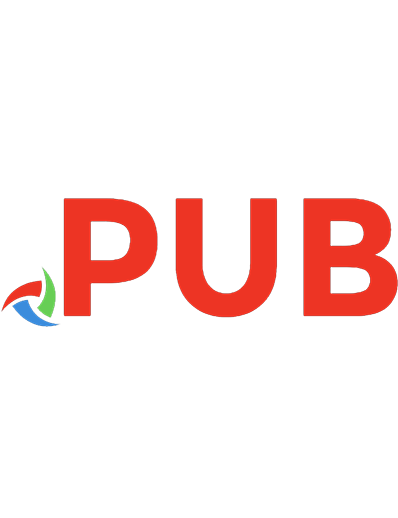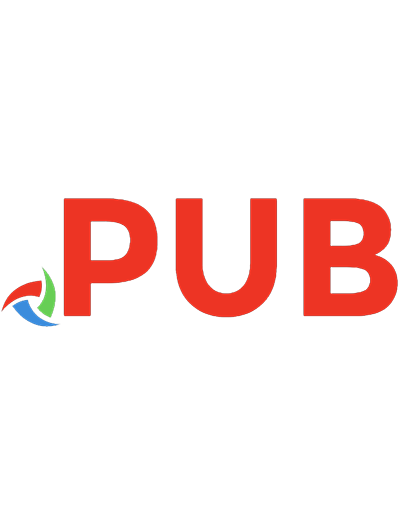TensorFlow Developer Certificate Guide: Efficiently tackle deep learning and ML problems to ace the Developer Certificate exam 9781803240138
Achieve TensorFlow certification with this comprehensive guide covering all exam topics using a hands-on, step-by-step a
315 89 13MB
English Pages 873 Year 2023
Table of contents :
TensorFlow Developer Certificate Guide
Contributors
About the author
About the reviewer
Preface
Who this book is for
What this book covers
To get the most out of this book
Download the example code files
Conventions used
Get in touch
Share Your Thoughts
Download a free PDF copy of this book
Part 1 – Introduction to TensorFlow
1
Introduction to Machine Learning
What is ML?
Types of ML algorithms
Supervised learning
Unsupervised learning
Semi-supervised learning
Reinforcement Learning
ML life cycle
The business case
Data gathering and understanding
Modeling
Error analysis
Model deployment and monitoring
Exploring ML use cases
Healthcare
The retail industry
The entertainment industry
Education
Agriculture
Introducing the learning journey
Why take the exam?
What is the exam all about?
How to ace the exam
When to take the exam
Exam tips
What to expect after the exam
Summary
Questions
Further reading
2
Introduction to TensorFlow
Technical requirements
What is TensorFlow?
Setting up our environment
Data representation
Creating tensors
Tensor rank
Properties of tensors
Basic tensor operations
Hello World in TensorFlow
Debugging and solving error messages
Summary
Questions
Further reading
3
Linear Regression with TensorFlow
Technical requirements
Linear regression with TensorFlow
Evaluating regression models
Salary prediction with TensorFlow
Loading the data
Data preprocessing
Model building
Model evaluation
Making predictions
Saving and loading models
Summary
Questions
Further reading
4
Classification with TensorFlow
Technical requirements
Classification with TensorFlow
Evaluating classification models
Confusion matrix
A student dropout prediction
Loading the data
Exploratory data analysis
Data preprocessing
Model building
Classification performance evaluation
Summary
Questions
Further reading
Part 2 – Image Classification with TensorFlow
5
Image Classification with Neural Networks
Technical requirements
The anatomy of neural networks
Forward propagation
Activation functions
Backward propagation
Learning rate
Building an image classifier with a neural network
Loading the data
Performing exploratory data analysis
Building the model
Compiling the model
Model visualization
Model fitting
Training monitoring
Evaluating the model
Model prediction
Summary
Questions
Further reading
6
Improving the Model
Technical requirements
Data is key
Fine-tuning hyperparameters of a neural network
Increasing the number of epochs
Early stopping using callbacks
Adding neurons in the hidden layer
Changing the optimizers
Changing the learning rate
Summary
Questions
Further reading
7
Image Classification with Convolutional Neural Networks
Challenges of image recognition with fully connected networks
Anatomy of CNNs
Convolutions
Impact of the number of filters
Impact of the size of the filter
Impact of stride
The boundary problem
Impact of padding
Putting it all together
Pooling
The fully connected layer
Fashion MNIST 2.0
Working with real-world images
Weather dataset classification
Image data preprocessing
Summary
Questions
Further reading
8
Handling Overfitting
Technical requirements
Overfitting in ML
What triggers overfitting
Detecting overfitting
Baseline model
Early stopping
Model simplification
L1 and L2 regularization
Dropout regularization
Adjusting the learning rate
Error analysis
Data augmentation
Summary
Questions
Further reading
9
Transfer Learning
Technical requirements
Introduction to transfer learning
Types of transfer learning
Building a real-world image classifier with Transfer learning
Loading the data
Modeling
Modeling with transfer learning
Transfer learning as a fine-tuned model
Summary
Questions
Further reading
Part 3 – Natural Language Processing with TensorFlow
10
Introduction to Natural Language Processing
Text preprocessing
Tokenization
Sequencing
Padding
Out of vocabulary
Word embeddings
The Yelp Polarity dataset
Embedding visualization
Improving the performance of the model
Increasing the size of the vocabulary
Adjusting the embedding dimension
Collecting more data
Dropout regularization
Trying a different optimizer
Summary
Questions
Further reading
11
NLP with TensorFlow
Understanding sequential data processing – from traditional neural networks to RNNs and LSTMs
The anatomy of RNNs
Variants of RNNs – LSTM and GRU
Text classification using the AG News dataset –
a comparative study
Using pretrained embeddings
Text classification using pretrained embedding
Using LSTMs to generate text
Story generation using LSTMs
Summary
Questions
Further reading
Part 4 – Time Series with TensorFlow
12
Introduction to Time Series, Sequences, and Predictions
Time series analysis – characteristics, applications, and forecasting techniques
Characteristics of time series
Types of time series data
Applications of time series
Techniques for forecasting time series
Evaluating time series forecasting techniques
Retail store forecasting
Data partitioning
Naïve forecasting
Moving average
Differencing
Time series forecasting with machine learning
Sales forecasting using neural networks
Summary
Questions
13
Time Series, Sequences, and Prediction with TensorFlow
Understanding and applying learning rate schedulers
In-built learning rate schedulers
Custom learning rate scheduler
CNNs for time series forecasting
RNNs in time series forecasting
LSTMs in time series forecasting
CNN-LSTM architecture for time series forecasting
Forecasting Apple stock price data
Note from the author
Questions
References
Index
Why subscribe?
Other Books You May Enjoy
Packt is searching for authors like you
Share Your Thoughts
Download a free PDF copy of this book










